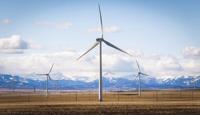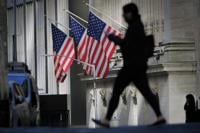The Bank of Canada expects to see a clear pullback in inflation by the spring, but it isn't taking any chances in its efforts to get the inflation rate back to two per cent, said governor Tiff Macklem on Monday.
"Yes, we are going through a difficult adjustment. The economy is slowing. We expect it's pretty much stalled," said Macklem, speaking in Vancouver after the Bank of Canada last week lifted its target rate by half a percentage point to 4.25 per cent.
"When snow melts, when we get to the spring, we should see much clearer evidence that inflation is moving down," he said at the press conference following a year-end speech.
He reiterated the message given by the bank last week, that going forward rate hikes will be dependent on what the data shows, rather than being taken as a given.
"Decisions to raise the rate or to pause and assess the impact of past rate increases will depend on incoming data and our judgments about the outlook for inflation," he said.
The bank has moved forcefully on rates this year, including last weeks' rate hike which was higher than some expected, because the risk of not doing enough is greater than going too far, Macklem said.
"If we under-tighten, inflation is going to stay too high. şĂÉ«tvs are going to have to continue to endure the hardship of higher inflation."
His comments came as he warned in his speech before the Business Council of British Columbia that geopolitical trends could make the future fight against inflation even harder.
Russia's invasion of Ukraine not only sent energy prices and inflation higher, it also underscored the vulnerability of the world to interconnected trade, which is helping accelerate a push toward more protectionism and narrower trade that could reduce efficiencies and further put pressure on prices.
The trend marks a reversal in the positive effects that globalization and increased supply through trade have had on inflation, Macklem said.
"Over the long term, it seems likely that we won’t have the same disinflationary forces that we’ve had for the past 30 years," said Macklem. "These potential developments could make it harder to bring inflation back to the two per cent target and keep it there."
In the shorter term, though, rate hikes could have a faster effect because of the high debt loads şĂÉ«tvs are carrying, with each rate hike adding increased pressure.
Statistics Canada reported Monday that households owed about $1.83 for every dollar of disposable income in the third quarter, nearing the record of close to $1.85 which was set in the third quarter of 2018.
Macklem said these high debt levels could make rate increases have a harder impact, but that the elevated savings rate of households have also helped create more of a buffer to potentially limit that effect for now.
Looking back at the year, he said that along with the war in Ukraine, the bank was surprised by how the combination of large supply chain shocks and an overheated economy played out on inflation.
In response, the Bank of Canada has boosted its data-gathering and listening capabilities on several fronts to keep a more granular view of what's going on with things like supply chains and what kind of knock-on effects there are when parts or supplies are delayed, he said.
The bank is also doing more to communicate with şĂÉ«tvs, through social media and other channels, and reiterating that it is aware rate hikes are creating pressure for households.
"It's really important that şĂÉ«tvs understand the decisions we're taking. We know that the more the more people understand how monetary policy works, actually, the better it works," said Macklem.
Since March, the Bank of Canada has hiked its key interest rate seven consecutive times to the highest rate since 2008 in an effort to bring inflation down and slow the economy.
After peaking at 8.1 per cent in July, Canada’s annual inflation rate slowed to 6.9 per cent in October — still well above the Bank of Canada's target rate of two per cent.
This report by şĂÉ«tvwas first published Dec. 12, 2022.








































